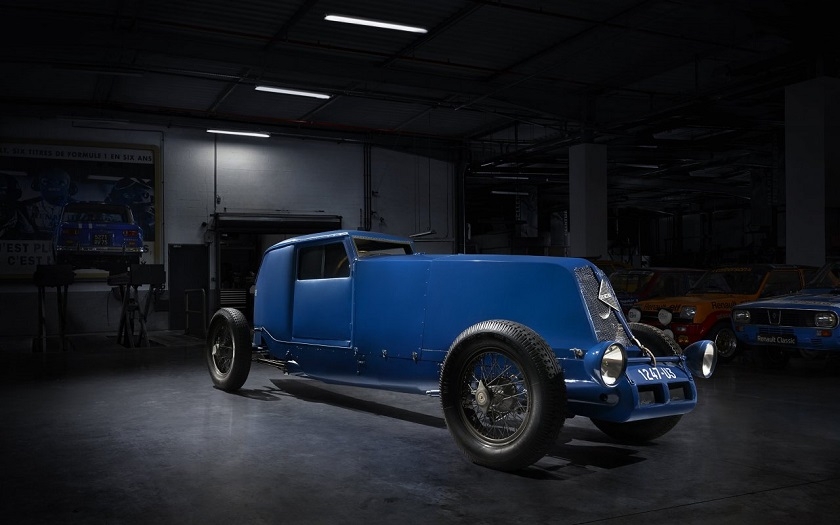A FRANCO-AMERICAN PARTNERSHIP
Before 1924, French manufacturers were hampered by most world record attempts being held outside France on speed rings at Brooklands (Great Britain), Indianapolis (United States) and Monza (Italy). The opening of the Montlhéry race track in October 1924 changed all that. Louis Renault charged Robert Plessier, who worked in the testing shop, with breaking records and Plessier chose American J.A. Garfield as his number two. The pair organised the team, oversaw production and even took the wheel in record attempts. A dream partnership was born.
STREAMLINED TO SUCCESS
Plessier and Garfield’s first attempt at producing a record breaker took the 40CV Type MC, tapered the rear of the body, removed the wings and windscreen and modified gearing to increase the top speed from 135 to 175kph. The car immediately broke the 24-hour record, covering 3,384.74 km at an average speed of 141.03kph. The difference in achievable speed and real speed over 24 hours was explained by refuelling and tyre-change stops. In response, Plessier and Garfield virtually invented the pit stop, getting their crew to improve fuel stops to under 50 seconds.
CONQUERING THE WORLD
Plessier, Garfield and their team remained unsatisfied – and in 1926 launched an NM Type 40 CV car as a single seater model with further streamlining and, crucially, the radiator placed behind the engine to improve cooling. With the team’s fuel stops now also being completed in record time, two world records were broken in quick succession. The new vehicle covered 50 miles at a speed of 190kph, then smashed the 24-hour record by covering 4167.57 km at an average speed of 173.649kph. On the way, the 40 CV broke several other records (1,000 and 2,000 miles, as well as 2,000, 3,000, and 4,000 km)… the Renault Sport spirit was born.
A BEAST OF AN ENGINE
Under its long hood, the 40CV was powered by a 9.1L inline six-cylinder engine producing a huge-for-the-time 140hp. That may not seem much today, but in 1926 the engine of the average vehicle on the road made less than 50hp – little wonder then that the 40CV was such a success. It was the largest six-cylinder engine in the company's history.
SUNSET FOR A LEGEND
The 40CV was a flagship for Renault for more than 15 years, from the original CG to the NM Type, before being retired in 1928 and replaced by executive models such as the Vivastella and Reinastella. Along the way it etched its name in sporting history and helped make the words 'Renault' and 'racing' synonymous the world over. Its DNA lives on in Renault's damond logo, first introduced in 1924 to match the geometric bonnet of the 40-CV Type NM executive tourer before being fully adopted in 1925.
Technical specifications
Renault 40 CV
| Engine | 6 cylinders in line, 9,121cc, 140hp |
|---|---|
| Transmission | 4 speed gearbox, rear-wheel drive |
| Brakes | On the transmission and the rear wheels |
| Dimensions | 5.40m (l) x 1.80m (w) |
| Weight | 2,000 kg |
| Max speed | 190km/hr |
-
 Click to open image!
Click to open image!
-
 Click to open image!
Click to open image!
-
 Click to open image!
Click to open image!
-
 Click to open image!
Click to open image!
-
 Click to open image!
Click to open image!
-
 Click to open image!
Click to open image!
-
 Click to open image!
Click to open image!
-
 Click to open image!
Click to open image!
https://projekt-renault.de/index.php/renault/renault-sport-legacy/item/2343-1926-renault-40-cv#sigProGalleriabe0bac8a92
Source: Media Groupe Renault




